Therapeutic Orchids - P-Z
We have been researching on Fragrant Orchids and our quest lead us to various Orchid genomes that were not only Fragrant but also Medicinal. This page features these Therapeutic Orchids from P-Z

List of most popular Therapeutic Orchids of Asia, starting with P-Z:
|
|
Platanthera ussuriensis (Regel) Maxim. syn. Tulotis ussuriensis (Regel) Hara |
 |
Chinese names: Taiwanyiye Lan (Taiwan single leaf orchid), Yiye Lan (one leaf orchid), Dusuan Lan (single bulb orchid), Bingqiuzi (iceball) Japanese name: Sanjiko (This name also applies to Cremastra appendiculata) Vietnamese names: Som tu co, Mao tu co In Greek mythology, Pleione is the mother of the Pleiades, the small cluster of stars in the northern sky known in the East as the Seven Sisters. The genus was given by Mr. David Don who wanted the name ro indicate characteristic clustering of pseudobulbs. It is a fairly popular orchid among collectors in the USA and Europe. Herbal Usage: China supplies Vietnam with the pseudobulbs which are used in that country to combat food poisoning and intoxication. It is also used on boils, and snake and insect bites . It clears phlegm, is antipyretic and detoxifies. The whole plant is used for treatment of wet sores, sore throat and rabies. It was regarded as a counter-poison and was used for snake bites in China. Pseudobulbs were used in treatment of tuberculosis and asthma. Phytochemistry: Some compounds isolated from the pseudobulbs possess strong anti-inflammatory activity. Amentoflavone present in the herb, is a potent, caffeine-like ca2+ releaser. It inhibits COX-2 expression, is anti-inflammatory and it has an effect on the brain similar to that of benzadiazepine. Amentoflavone has significant antiviral activity against influenza A and B viruses and moderate antiHsV 1 and antiHSV- 2 activities. It causes apoptosis in B16F-10 melanoma cells. Amentoflavone inhibits angio- genesis and induces apoptosis in melanoma and human breast cancer cells, thus opening up a new range of angiogenesis compounds. Amentoflavone also inhibits angiogenesis of endothelial cells and stimulates apoptosis in hyperplastic scar fibroblasts. Amentoflavone inhibits UVB-induced matrix metalloproteinase-1 expression of normal human skin fibroblasts. It could be possibly suppress skin photo-aging. 4 new pyrrolidone-substituted bibenzyls, dusuanlansins A–D, which contain nitrogen were isolated together with 19 other known compounds from the pseudobulbs. Several of the known compounds exhibited strong anti-inflammatory activity. |

|
Chinese name: Maochundusuan Lan (hairy lip single garlic/bulb orchid) Herb is obtained from Hubei, Guangdong, Guangxi, Guizhou, Yunnan and Tibet. Herbal Usage: The pseudobulbs are used to remove heat and toxins and to treat abscesses, snake bites and lymphatic tuberculosis. |

|
Pleione diantha Schltr., Epidendrrum humile Smith; Coelogyne humilis (Smith) Lindl., Cym- bidium humile (Smith) Lindl. Nepalese name: Hathi tauke (meaning elephant head and referring to the shape of the flower), Shaktigumba Herbal Usage: A paste made from the pseudobulbs is applied to cuts and wounds in Nepal. Powder is consumed as a tonic. |

|
Chinese name: Qiuhuadusuan Lan (autumn flowering single bulb orchid) Myanmar Name: Phar la tet thitkhwa phyu It is an epiphyte on tree trunks in broad-leaved, evergreen forests in western Yunnan, Bhutan, Sikkim, Arunachal Pradesh and Assam, Myanmar and northern Thailand. Herbal Usage: The pseudobulbs are used to treat liver complaints and stomach ache in India and Nepal. |

|
Epidendrum praecox Smith, Coelogyne praecox (Smith) Lindl., Cymbidium praecox (Smith) Lindl., Coelogyne wallichiana Lindl. Nepali name: Lasun pate, Shaktigumba Myanmar name: Phar la tet thitkhwa It is an epiphytic orchid found on tree trunks or on rocks at 1200–2500 m in Nepal, Bhutan, Northern India, Myanmar, Thailand and China. Herbal Usage: A paste made from the pseudobulb is applied to cuts and wounds. Powder is mixed with milk to form a tonic and energizer in Nepal. |

|
Chinese name: Yunnandusuan Lan (Yunnan sin- gle garlic orchid, Yunnan single bulb orchid), Duyebaiji (single leaf Baiji), Dusuan Lan (single garlic orchid) It is found on mossy rocks in light shade, or as a terrestrial on grassy slopes or amongst shrubbery at 1100–3500 m. It is endemic in southwestern China. Herbal Usage: . It is said to nourish the lungs, and is used to treat coughs, pulmonary silicosis, tuberculosis and bronchitis. The stem is used to remove heat and toxin, stop coughs, clear phlegm, arrest bleeding and promote tissue healing. It is also prescribed for gastro-intestinal bleeding, carbuncle and external injuries. |

|
A terrestrial orchid with creeping rhizomes and terete pseudobulbs. It is found in wet locations between 100 and 1000 m from the Andaman Islands and peninsular Thailand through Malaysia to Singapore, Sumatra, Java and Kalimantan. Herbal Usage: It was reported by Holmes in 1892 (Meldrum’s List of Johore Medicines) that the juice of the fruit is dropped into the ear to treat earache. |

|
Chinese name and medicinal name: Zhu Lan (red orchid) Japanese name: Tokiso It is an alpine, terrestrial species, found in damp places on grassy slopes, sparse woods and ravines at 400–2000 m in northeast- ern China, the provinces immediately south of Yangzi river and in Korea and Japan. Herbal Usage: The whole plant is used as an antidote for snake bite in China. Phytochemistry: The two anthocyanins, cyanidin 3-glucoxyloside and cyanidin monoglucoside, were present in the orchid. |
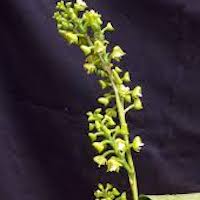
|
Chinese name: Duosui lan Indian name: (Orissa): Kakina The orchid enjoys a pan-tropical distribution from southern Yunnan in China, Indochina, Thailand, Malaysia, India, Sri Lanka, Africa and tropical and subtropical America. Herbal Usage: The tuber is used to treat arthritis by tribals of the Niyamgiri Hills in Orissa, India. Approximately 100 mg. of fresh tuber is boiled in 500 ml. water until the volume is reduced to 100 ml, and 3–4 ml of this decoction is taken with 7–8 drops of honey twice daily on an empty stomach as treatment for arthritis. Fragrant Orchid: Flowers are scented. It smells like jasmine. Methyl anthranilate and indole conveys the scent of sampaquita (jasmine). Lime blossom fragrance is produced by nerolidol, dihydrofarnesol and farnesol enhanced with a slew of minor constituents which includes gamma-decalactone, 2-amino benzyladehyde, beta-ionone and methyl jasmonate. |

|
Widely distributed from central Bhutan and Sikkim to Myanmar, Thailand, Indochina, across Malaysia and Indonesia, the species occurs from the lowlands to 700 m. Herbal Usage: The Nicobarese in the islands at the Bay of Bengal employ the orchid to treat fits. |

|
Chinese name: Guang bu xiao hong men lan This lovely, alpine, terrestrial species is abundant in open scrub in the Huanglong area at 2800–3600 m in Sichuan Province. Herbal Usage: The tubers are used in India to treat diarrhea, dysentery and chronic fever. There is no reported medical usage in China where the plant has its main distribution. |

|
Chinese name and medicinal name: Huoyan lan (fire orchid), red coral It can flower at any time of the year in a hot climate. This popular species is distributed from southern China to Myanmar, Thailand and Indochina. Herbal Usage: In CTM it is used to remove gas, dampness, improve circulation, relieve rheumatic pain and to treat fractures Decoction is prepared with 9–15 g of the plant. The fresh plant is also rendered into a paste for application to affected parts of the body. Pickled young leaves this orchid (Indonesian names: Anggrek Merah, Boenga karang) was considered a delicacy. Phytochemistry: Alkaloid is present in trace amounts (approximately 0.001 % dry weight, but the levels are much higher when dried. They exceed 0.1 % dry weight. |

|
Common names: Fox Tail Orchid Chinese name: Zuanhui Lan (drill beak orchid) Indian names: Dronpadi Mala in Hindi, Seetechi veni (Gajaara), Panas koli (Konkani), Pumam (Orissa), Rasna (Arunachal Pradesh), Banda, Rasna (Uttarakahnd) Bangladeshi names: Sita pushpa, Pumam, Parada mura Thai name: Alyaret, Hang Kraro Indonesian name: Angkrek Lilin in Sundanese and Malay (candle orchid) Nepalese names: Ghoge gava, Thur in Nepali, Gam (Gurung) Chadephuul It is a stout, tough, prolific epiphyte which thrives in deciduous and dry evergreen forests. Plant grows well but does not flower if it does not have a dry period. It has a wide distribution from Sri Lanka and India across Myanmar, south China, Thailand, Indochina and Malaysia to the Philippines. In Peninsular Malaysia, it occurs only in the northern states of Kelantan, Perlis, Kedah and Perak. It is common at low elevations in the Western Ghats. Phytochemistry: A small amount of alkaloid (between 0.001 and 0.01 % dry weight) Herbal Usage: In India, the fresh plant is used as an emollient. Leaves are used to treat rheumatism. Root of Pumam (R. retusa) mixed with leafy shoots of Pisum sativum (pea) is made into a paste which forms a remedy for bloody diarrhea among the primitive Dongria Kandha tribe of Orissa. A paste made with the leaves is used for wounds. Leaves are used to treat rheumatic disorders in Uttarakhand. Roots (known locally as Rasna in Arunachal Pradesh) are used in a similar manner. Plant is used to manage asthma, tuberculosis, nervous twitching, cramps, infantile epilepsy, vertigo, palpitations, kidney stones and menstrual disorders. |
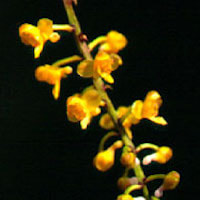
|
Chinese name: Jishu lan. In Hong Kong: preci- pice orchid, big ladder orchid Chinese medicinal name: Xiaoyejishu Lan Thai name: Uang Man Pu Flowering period is May to August in Thailand and northeast India. It flowers from June to September in China. It is found open forests and on cliffs at 500–1200 m in India and Bhutan across Myanmar and Thailand to Laos and Vietnam, and China. Phytochemistry: Alkaloid is present in small amounts. Herbal Usage: The whole plant is used as a blood tonic. In CTM, it is used to treat “heaty coughs”; it soothes the lungs. |

|
Chinese and medicinal name: Yuanmaoniaozu Lan (hair edged bird feet orchid) Flowers are pink and flowering period is August to October in China. Herbal Usage: Stem is used to strengthen the loins, invigorate the kidney, nourish blood and calm the mind. It is used to treat nephritis, weak kidneys and backache, swellings of the face and legs, and heart disease. |
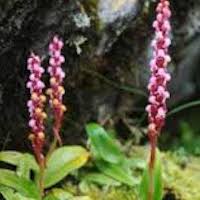
|
Chinese name: Dui dui shen Chinese medicinal name: Niaozu lan (bird feet orchid), Dui dui shen Indian name: Ezhtkwehhdr in aboriginal Toda (bullock’s horns) referring to twin spurs of flower; salam misri Nepalese names: Mishri, Thamni It is a common, highly variable plant found at 1300–3200 m in Myanmar, Sikkim, Nepal, Bhutan, west Yunnan, and in Pakistan. The generic name uses the Greek word satyr to highlight the previously popular use of this orchid as an aphrodisiac. Herb is harvested in autumn and sun-dried. Herbal Usage: Tubers are eaten by the Monpa tribe to treat malaria, dysentery and as an aphrodisiac. They are regarded as a tonic. Tribal people at the Kudremukh National Park use tubers to treat malaria and dysentery. Dried tubers are consumed as a tonic or prophylaxis against dysentery, whereas juice is taken for fever and used on cuts and wounds. In Yunnan, it is used to treat low backache, chronic nephritis, and weak kidneys and erectile dysfunction. |

|
Chinese name: Duanjingeji Lan Chinese medicinal name: Zhijialan Fragrant Orchid: This has a nice sweetish scent. Herbal Usage: In CTM is used to counter heat and wind. A decoction prepared with 30 g of the herb, sweetened with white sugar, is administered to children afflicted by acute illnesses involving the brain and nerves. |

|
Chinese name: Gai hou lan Thai names: Khem Nu (in Bangkok), Kulap dong (in Ubon Ratchathani) It flowers in May to July in Nepal, April in China, almost year-round in Thailand and April to May in Perlis in northern Peninsular Malaysia. Herbal Usage: In Nepal, powdered plant is mixed with rice flour and butter, then baked, and served as tonic. Leaves are used to treat rheumatism, and juice extracted from the roots is used to treat cuts and wounds. |
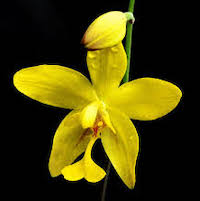
|
Thai names: Tan diao (in the north), Khao niao Hua khao nieo (in Prachin Buri), Luang Phitsamon (in general); also Luang Si Sa Ket This small, yellow Spathoglottis distributed in Burma, Thailand, Peninsular Malaysia and Java. In Malaysia, it is found only in Gunong Jerai in the north, and even there it is now quite rare. Herbal Usage: Pseudobulbs are used to treat abscesses in Thailand. In Indochina, it was used to heal war wounds and infected wounds. |

|
Common names: Pink Spathoglottis; Purple Spathoglottis Chinese name: Zihuabaoshe Lan Malay names: Lumbah tikus (little mouse); (in aboriginal Sakai): Wah Indonesian names: Angkrek Daun Tjongkok; Angkrek Tjongkok (in the Sunda islands), Antel-antelan, Djangkuawang (Java), Kupur (Gajo), Buluh Hutan (Menado), Daun korakora, Daun tana, (Maluku), Ahaan (Amboin) Lalagu (Halmahera), Kusuma raka (Ternate), Bure (Seram utara) Thai names: Krathiam pa, Wan chuk (in Trat), Sapato, Ueang din (in Bangkok) It flowers throughout the year, with peaks after the change of monsoons, or during the dry seasons. Mr. Issac Henry Burkill (1870–1965), Director of the Singapore Botanic Gardens from 1912 to 1925, had them planted at Malaysian-Singaporean gardens. In Singapore, it is found in open scrubland or belukar in the company of Aurndina graminifolia, Nephentes species, grasses and ferns. Herbal Usage: In the state of Perak in Peninsular Malaysia, aboriginal tribes used a decoction as a foment to treat rheumatism. A decoction of the plant is used to treat rheumatism and as a hot foment in India. It is also used to treat rheumatism in Bangladesh. In the Nicobar Islands, it is used to treat earache. A yellow salve made from its powdery seeds is sometimes applied on children in place of bedak (jasmine-perfumed rice flower) to promote a fair countenance. |

|
Chinese names: Baoshe Lan (bud tongue orchid), Huanghuaxiaodusuan (yellow flower small single garlic), Chinese medicinal name: Huanghuadusuan (yel- low flower single garlic) Thai names: Toe si re kho (Karen and Mae Hong Son), Ban Chuan (Mae Hong Son), Ueang din (Lampang), Ueang din lao (in Chiang Mai), Ueang nuan chan (in the north) The Chinese herb comes from the region south of the Yangzi. It wass one of the earliest colonisers of Krakatoa after the place was shattered and minimized by a massive volcanic eruption in 1883. Even now, the seeds germinate readily when sown around the parent plant. Despite this apparent robustness, it is extremely prone to virus, and it is used as an indicator plant to identify the presence of virus in other plants. Herbal Usage: The stem is said to benefit the lungs. It stops coughs, promotes granulation, and heals sores . To prepare a decoction 9 g is used. The fresh herb is used in the preparation of a poultice. |
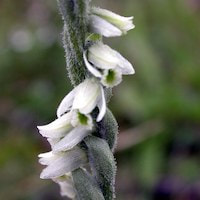
|
It is found in Afghanistan, Tibet, in Asia Minor, Europe and Africa. Herbal Usage: In India, its roots are used as an aphrodisiac. |

|
amoena (M. Bierberson) Hara Chinese names: Shoucao (tassel grass), Qinglongchanzhu, Jinlongpanshu, Panlongshen, Longbaozhu, (dragon coiled around a post); Qingmingcao (bright spring herb) Taiwanese name: Chheng-thian-lion-thiau Japanese name: Nejibana (spiral flower), Nezibana, Mojizuri Korean name: Ta-rae-nan-cho Mongolian name: Aolangheibu. Vietnamese name: Ban long sam Medicinal names: Panlongshen in Chinese; Poon lung sum (Hong Kong); Chheng thian liong thiau (Taiwan); Bamryongsam (Korean) Indonesian names: Angkrek hindesan, Djukut hindesan (Sundanese) (wool-comb orchid) It is a small terrestrial orchid which grows almost as a weed in lowland fields, meadows and forests in both acidic and alkaline soils. It thrives even in disturbed areas and is to be found along roadside drains in Brisbane, preferring a moist to a dry environment. After flowering, the plant enjoys a growth period of several months. Then it dies back to the bulb. Individual plants live for only 7 or 8 years, but they produce clusters of little bulbs before they die. Phytochemistry: Chemicals found- Spiranthols A and B, spirasineol A, orchinol, p-hydroxybesaldehyde, p-hydroxybenzyl alcohol, hydrocarbons, sterols and ferulates. Spiranthol A showed cytotoxic activity on HeLa-S3 cells, with inhibition rates of 98.77 % at 25 mcg/ml and 7.03 % at 6.26 mcg/ml. The 9,10- dihydrophenanthrene derivatives showed bacteriostatic activity on Gram-positive bacteria. Dihydroflavanoid isolated from CTM medicine, constituted from the roots, inhibited cell growth in the human tumour cell lines A549, BEL-7402, SGC-79001, MCF-7, HT-29, K562 and A498 in vitro. Herbal Usage: In CTM, the whole plant is decocted with pork and used to strengthen the “kidneys” and “to cure spitting of blood”. A similar preparation is used by the Bai minority in western Yunnan to treat kidney inflammation or to strengthen the kidneys. Plants are sun-dried for storage. It nourishes and strengthens a weakened body. It is a folk remedy in Taiwan for haemoptysis, epistaxis, headache, chronic dysentery and Meningitis. |

|
Indian name: Ponnamponmaraiva in the Malaya- lam dialect Herbal Usage: It is used to treat diseases involving the nerves, rheumatism and scorpion stings. Juice from the plant are used “to temper bile and abate frenzy”. Powder prepared from dried flowers were used to treat asthma and mania. Crushed leaves and stems are made into an ointment for treating various skin lesions. It is one of the “Indigenous Drugs of India” |

|
Thai name: Kratai hu dieo, Ta khap lueang, Tin ta khap, Ueang maeng mumkhao It is an epiphytic species that flowers in June to July in China; July to September in Thailand. It is widely distributed from Bhutan to Hong Kong and Indonesia. Usage: Whole plant is used to treat asthma in Thailand. |

|
It is distributed in Sumatra, Peninsular Malaysia and Borneo, in the first locality at 1000 m. In Peninsular Malaysia, it was regularly found on trees in Perak and Pahang. Herbal Usage: Leaves made into a paste for treating nose ulcers. Fragrant Orchid: Flowers smell of European Meadowsweet. Main components of the strong scent are- cis-linalool oxide and nerolidol overlaid with (E,Z)-2,4-decadienal, ethyl(Z)-4-decenoate, ethyl (E,Z)-2,4-decadienoate with the corresponding (E,E)-isomers and gamma-decalactone. The typical aroma of Bartlett pears is produced by ethyl (E,Z)-2,4-decadienoate and the corresponding methyl ester. |
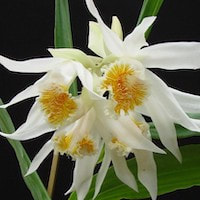
|
Chinese name: Sun Lan (bamboo orchid) Chinese medicinal names: Yan Sun (rock bamboo); Yanjiao (rock horn); Shizhuzi (stone bamboo) Jiegudan (fracture union pill); Shisun (rock bamboo); Yanzhu (rock bamboo) Thai names: Chang Nga Dieo (in general), Phothuki (in Karen Mae Hong Son), Sawet sot si (in Bangkok), Ueang nga chang (in Chiang Mai) Nepalese names: Goliano It flowers in June in China and from March to August, in Bhutan, Darjeeling and Sikkim. It is usually lithophytic, sometimes found in the hollows of large branches of trees growing in rocky soil. It has a wide distribution from India, through Nepal, Bhutan, Myanmar, eastern Tibet, southwest Sichuan and southern Yunnan to Thailand and Malaysia. Herbal Usage: Herb is collected throughout the year. It is used fresh. For storage, it is first boiled, then dried. Chinese herbalists use the whole plant to enrich yin, benefit the lungs, clear phlegm and stop coughs, improve blood flow, remove bruises and assist the healing of fractures. It supposedly dissolves extravasated blood and improves circulation. In Nepal, its paste is used to help set fractures. |
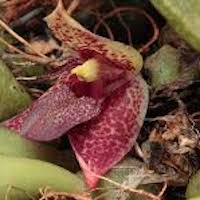
|
Thai name: Ma tak kok Description: This is a small epiphytic orchid. Found in northeast of Thailand. Usage: The whole plant is used as a tonic. |

|
Schoenmorphus capitatus Gagne. Chinese name: Duansuizhujing Lan. In Hong Kong: bamboo stemmed orchid Malay names: Serugut, Ranchang hantu Description: This is a very unusual terrestrial orchid which has the appearance of bamboo but with large, lanceolate, plicate leaves, which are widely spaced along the erect stem. It is distributed from India, Bhutan and Bangladesh across Southeast Asia to southern China, Taiwan, Australia and Fiji. In Bhutan, it flowers in May. In China from June to August and in northeast India, November. Usage: A decoction of the plant is used to treat malaria and decoction of the roots is used for diarrhea in Peninsular Malaysia and India. It has a similar usage in Bangladesh. There is no medicinal usage for this Orchid in China, but in India this is used for treating several common diseases. |

|
Chinese name: Dahuawandai Lan (big flower ten thousand generation orchid, Large Vanda) Thai name: Fa Mui (in the north), Pho don ya, Pho thong (Karen Mae Hong Son) Myanmar Name: Moe lone hmine Indian name (Tirap District, Arunachal Pradesh): Rangpu It forms the backbone of most blue and red Vanda hybrids. Hence, it was highly sought after and over collected. It was declared an endangered epiphytic species. Due to protection provided, it is now thriving in the wild, especially in Myanmar and northern Thailand. In Arunachal Pradesh, it is venerated and used for worship. Phytochemistry: Phytosterols, terpenoids, carbohydrates and stilbenoids were identified. Imbricatin, methoxycoelonin and gigantol showed anti-oxidant properties and inhibited COX-2 production and activity in ultraviolet-irradiated skin cells, thus suggesting that they could protect skin against the harmful effects of sunlight and pollution. Herbal Usage: Juice from the leaves is used to treat dysentery and diarrhea. Juice is also used for skin diseases. It is also reported to be used extensively for lesions of eye in northeastern India. |

|
Chinese medicinal name: Qinchunwandai Lan Thai name: Khao kae (in Bangkok) It flowers in April and May and is found only in Guangxi, southwest Guizhou, southern Yunnan and Vietnam. Herbal Usage: CTM states that it detoxifies and removes dampness. It is used to treat peripheral neuritis and ulcerative swellings such as carbuncles. |

|
Chinese name: Chachunwandai Lan Nepali name: Bhyagute phul in Nepali dialect, Vashgute phul Myanmar name: Jyo koke thitkhwa This is a common, epiphytic, vandaceous orchid, distributed in Nepal, Bhutan, northern India, Tibet and southwest Yunnan. In Bhutan and northeast India, it commonly occurs on the trunks of Rhododendron arboretum and Skimmia spp. Phytochemistry: The 1-hydroxymethylpyrrolizidine ester, laburnine acetate was isolated. Laburnine is a poisonous alkaloid originally isolated from unripe seeds of Laburnum anagyroides. It possesses antimicrobial activity against fungi and Shigella. Herbal Usage: Plant is made into a paste to treat cuts and wounds in India. In Nepal, a paste made with the roots is used for treating boils and dislocated bones. Leaf powder is used as an expectorant, whereas leaf paste is applied on cuts and wound. Leaves are also used to make a tonic and expectorant in NW India. It is used as a nutrient and tonic for general debility in Uttar Pradesh. |
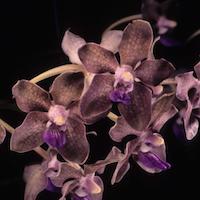
|
Sri Lankan names: Anuradhapura Orchid, Grey Orchid, Rat-tha, Arattha, Rasni Indian names: Naguli (Tamil), Banki (Orissa), Nai (Bengal), Bandanike (Canaarese), Banda, Nai, Perasara, Persara, Vanda, San, Alisara (Hindi), Atirasa, Bhujangakshi, Chhatraki, Dronagandhika, Elaparni, Gandhanakuli, Muktarasa, Nakuleshta, Nakuli, Palankapa, Rasadhya, Rasana, Rasya, Sarpagandha, Shreyasi, Suggandha, Sugandhimula, Surasa, Suvaha, Vandaka, Vriksharuha, Yuktarasa (Sanskrit), Darebanki (Santal), Chittiveduri, Kanapabadanika, Mardaru, Vadanika (Tel- ugu), Banda (Urdu), Knapachettu (Madras Presidency in 1933), Jarakindu, Japa (Madhya Pradesh), Ippa vajrnika (Gonds of Andra Pradesh), Vandekigidda (Karnataka), Maravazha (Kerala) Indian medicinal names: Rasna in Sanskrit, Hindi, Marathi, Bengal and Mumbai. However, Rasna refers more commonly to Pluchea lanceolata which is not an orchid. Rasha (Unani) Nepalese names: Parajiva, Rasna Arabic name: Kharkittan Persian name: Zanjabeel-e-shami Thai name: Ueang sam poi India (in Chiang Mai), Ueang suea lek (in Bangkok) It is a robust, lowland, epiphytic orchid. It occurs in Sri Lanka, India, Nepal, and Myanmar close to human habitation. It has a wide tolerance for sunlight, (27–93 % sunlight), high temperatures (26–31 oC) and low relative humidity (31–44 %). Phytochemistry: It contains alkaloids, tannins, resin, saponin, beta and gamma sitosterols, fatty oil and colouring agents. An extract of the entire plant produced an anti-acetylcholine and anti-arthritic effect on rats. It contains two anti-inflammatory compounds, hepcosame (C27 H56) and octacosonol (C28 H58 O). Tessallatin, a phenanthropyran, was isolated from V. tessallata. Herbal Usage: This orchid medication is mentioned by ancient Sanskrit writers under the names Rasna (or Raasnaa- the ancient “anti-ageing” tonic and Gandhanakul) which are said to be bitter, aromatic and useful for rheumatism. Rasna was used to treat nervous disorders, rheu- matism and scorpion stings. It was a popular prescription for rheumatism. A liquid extract or syrup prepared from the orchid was used to treat dyspeptic conditions, bronchial affections and rheumatic fever in India. Ear drops are prepared from the roots. The whole plant is used to treat fractures, and roots as a female contraceptive. Leaves are thought to be capable of preventing wounds from developing into purulent sores. Leaves are also used to treat tearing and earache, the latter either by itself or in combination with the aerial roots and neem oil. It was used by herbalists to treat secondary syphilis and for snake and scorpion bites. The Dongria Kandha tribe of the Niyamgiri Hills of southwest Orissa uses a decoction of the root in honey for the treatment of STDs (sexually transmitted diseases. Fragrant Orchid: strong floral scent of V. tessellata is because of linalool (23 %), methyl benzoate (61.5 %), cinnamic aldehyde (%.1 %) and methyl cinnamate (4.6 %). It has lot of traces molecules, such as benzyl acetate, alpha-ionone, 3-phenylpropanal, p-cresol and indole. Fragrance of V. tessellata is transmitted to its F1 and F2 progeny in hybrids made with other species of Vanda. Roots of V. tessellata are also fragrant. |

|
Indian name: Malanga in Orissa. Medicinal names: Rasna, Banda Thai name: Khem lueang (in Bangkok) It is found at the foothills on of the Himalayas, in Nepal, Bhutan and Sikkim, extending to northern Myanmar, Thailand and Sri Lanka at 800–2000 m, in dry, broad-leaved forests. In Bhutan and Sikkim, it occurs in broad-leaved forests, commonly on Terminalia chebula. Phytochemistry: Parviflorin and tessalatin, two 9,10-phenanthropyran derivatives were isolated from whole plants. Herbal Usage: The orchid is used to treat rheumatism. Crushed leaves are applied to cuts and wounds. Its decoction is used for earache. An Orissa hill tribe uses the plant to treat earache. Root is boiled to prepare a decoction that is taken twice daily to cure asthma. The roots are used to treat dyspepsia, bronchitis, inflammation and coughs under the Unani system. They are also used to tone up the liver and brain, reduce inflammation and heal minor fractures and are sold as rasna in Ayurvedic shops. |

|
Thai Name: Khot nok kut (in Surat Thani), Khruea ngu khieo (in Nakhon Ratchasima), Thau ngu khieo (in Saraburi) Description: Stems are a dark green and flattened. It is distributed in the southern half of Thailand, Myanmar, Indochina, northern Pen- insular Malaysia and Java. Herbal Usage: The stem is used in the treatment of liver dysfunction in Thailand |

|
Indian name: Telinga kerbaoo It is distributed in India, southern Thailand, Sumatra, Peninsular Malaysia and Borneo at low elevations, rooting in the ground and climbing trees in shady locations. Herbal Usage: The large fruit is sweet and edible, tasting like small bananas. It is eaten as a vegetable in India. An aqueous extract of its flowers is applied on the body to treat fever. Juice from the leaves is applied on the hair to encourage thick growth. In Indonesia, the milky sap of the stems is used as a hair-promoting shampoo |
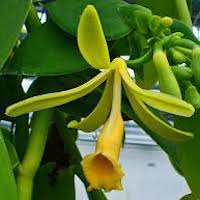
|
Thai names: Wanila (in Bangkok), Vanilla It was introduced into cultivation in the French Reunion Island from Central America in 1817 by way of Mauritius because of the high content of vanillin in its large, fleshy seedpods which have a length of up to 15 cm. Today, vanilla comes from many sources which include Central America, Mauritius, Reunion, Madagascar, Indonesia, the Pacific Islands, India (northeast India, Kerala, Karnataka, Tamil Naidu and Lakshadweep), the Andaman and Nicobar Islands, Thailand, Indochina and China. In its native Central America, it grows in damp forests up to 600 m. They are hand-pollinated in the Vanilla farms. The exported products are the vanilla pods which are variable in quality and contents from source to source as well as from batch to batch. Fragrant Orchid: The major fragrance in vanilla pods is vanillin which accounts for about 2 % of the fermented fruit (range 1. 5–2.75 depending on provenance. However, vanillin is not present in newly harvested pods. It is formed during curing or fermentation when the precursor, non-volatile compound vanilloside (gluco-vanillin) undergoes beta-hydrolysis. Vanillin accounts for around 85 % of the volatile compounds. Another is p-hydroxybenzaldeyde (9 %), with p-hydroxybenzyl methyl ether accounting for 1 % Phytochemistry: About 130 compounds have been isolated from natural vanilla. These are made up of phenols, phenol ethers, alcohols, carbonyl compounds acids, esters, lactones, aliphatic and aromatic carbon hydrates and heterocyclic compounds. Herbal Usage: The whole plant is considered to have aphrodisiac value in India. The roots are used as a stimulant and to treat gonorrhea and dysuria, possibly resulting from the sexually transmitted disease. |

|
Chinese name: Xianzhu Lan Taiwanese name: Cao Pu Lan (bunched grass orchid) Indian name: Shwethuli in Bengal Nepalese name: Kansjhar Bangladeshi name: Swet huli, Shwet huli This is the most widely distributed species occurring abundantly in grassy locations in moist, swampy ground, even in running water, throughout India from the lowlands. It is almost a weed of some padi at low elevations in Malaysia and Indonesia. Herbal Usage: Tubers are used as Salep. They are considered to be a blood purifier and tonic, it is used externally for boils. It is also used to treat infections of the eye. It is still used as a tonic, or as a form of Salep, in Bangladesh |
Medicinal Orchids of Asia and Native Orchids of Singapore
Orchids were used in most Ancient Cultures, particularly in Asia. Here is how-
CHINA (Traditional Chinese Medicine TCM) - Approximately 1200 species of orchids, belonging to 174 genera occur in China. Chinese were first to use orchids for medicines. Shên-nung described Bletilla striata and a Dendrobium species in his Materia Medica of the 2800 BC. In AD 1233, Chao Shih-Kng wrote Chin Chan Lan P'u, where he describes 20 species and how to grow them.
ARABIA - The earliest medical use of plant is in a 4000-year-old Sumerian clay tablet, but no one knows if this included any orchids. However, few centuries later, a popular traditional Orchid drink SELAP was being used all over Arabia & Ottoman Empire. This is made by grinding tubers of orchis militaris, orchis mascula, and other kinds of orchids. Even today, Selap is popular in Turkey, Saudi Arabia, Syria, and Iran. It is said to be effective in curing sore throat, digestive problems, diarrhea, and gum disease.
INDIA - 2000BC's medicinal system included īvantī, Jīvaka, Ṛṣabhaka, Rāsnā, Mānakanda, Pañcagula. These are used in Ayurveda and are said to be orchids. There are over 50 species of orchids in traditional Ayurvedic medicine.
Ashtavarga is a rejuvenator, a tonic made by eight medicinal plants. The Sanskrit names for these eight plants are Meda, Mahameda, Kakoli, Ksheer Kaoli, Riddhi, Vriddhi, Rishbhaka, and Jeevak (Jivaka). Of these 2 are orchid- Riddhi and Vriddhi. These two are species of Habenaria, possibly H. edgeworthii Hook f. ex Collett (¼ Platanthera edgeworthii), and H. intermedia D. Don (¼ H. arietina).
Cymbidium aloifolium among the 84 angiospermic plant species that they used as medicine.
NEPAL & TIBET - In Nepal, two orchids, Cypripedium himalaicum (Amchi khu juk pa) and Dactylorhiza hatagirea (Amchi wangpo lagpa) are employed by Amchi physicians practising Tibetan medicine. In the region, Nepal ranked highest in usage of Orchids. They made use of 17 genera of orchids (Brachycorythis, Calanthe, Coelogyne Cymbid- ium, Cypripedium, Dactylorhiza, Dendrobium, Gymadenia, Habenaria, Luisia, Malaxis, Plantathera, Pleione, Rhynchostylis, Satyrium, Thunia and Vanda) and left out only Epipactis and Pholidota which were used by other tribes.
INDONESIA & MALAYSIA - Malays did not distinguish between species and they often substituted one species of Dendrobium for another, all covered by the common name anggrek. In treating earache, juice squeezed from a heated pseudobulb was used, and the orchid chosen would usually be Bulbophyllum vaginatum or Dendrobium crumenatum.
GREECE- Testicles are pronounced as "orchis" in Greek. Theophrastus (372–286 BC) named the orchids from that word, as the underground tubers of many European terrestrial orchids resemble a pair of testicles. He also mentioned that Orchids have medicinal properties.
AFRICA - Southern Africa is home to approximately 494 orchid species, of which 49 are used in African traditional medicine. They are used to treat cough, diarrhea, madness, fertility, pain, nausea, and intestinal worms etc.
AMERICA - Unfortunately, Native American culture and documents have been lost to time. The closest usage we found was by the Aztecs who primarily used Vanilla. Today its medicinal uses are confined to relieving nausea and improving food intake in patients receiving chemotherapy. Word ‘vanilla’ is derived from the ‘vainilla’ which is derived from Latin word ‘vagina’ or pod or sheath.
JAPAN (Kanpo)- In 1728, Jo-an Matsuoka described species of Cymbidium, Neofinetia, Aerides, Dendrobium and Bletilla. There seems to be class differentiation to growing Orchids. The Samurai are know to grow Neofinetia falcata, the merchants grew Cymbidium, and possibly the peasants grew Bletilla. We aren't sure how many of these orchids were actually used as medicines.
KOREA (Korean Traditional Medicine- TKM) - The oldest TKM book in existence today is King Sejong’s 85-volume Hyang Yak Jip Sung Bang compiled in 1433. Tianma (Gastrodia elata) is a traditional herb in Korea for the treatment of neurological disorders such as scotodinia, paralysis and epilepsy.
AUSTRALIA - Australian aborigines and early settlers regularly used orchids. Orchids was also part of their regular diet - Gastrodia sesamoides (roasted), Dendrobium speciosum, Caladenia species and Diuris maculata (sweet-tasting). They used Cymbidium canaliculatum (dysentery), Cymbidium madidum (Oral contraceptive and dysentery), Dendrobium teretifolium (Rub leaves to relieve pain) ; Dendrobium discolor (anti-inflammation and cure for ringworm)
Many researchers have documented other medicinal plants. If you are looking for that, this is not the right place. Here we are documenting only medicinal Orchids.

